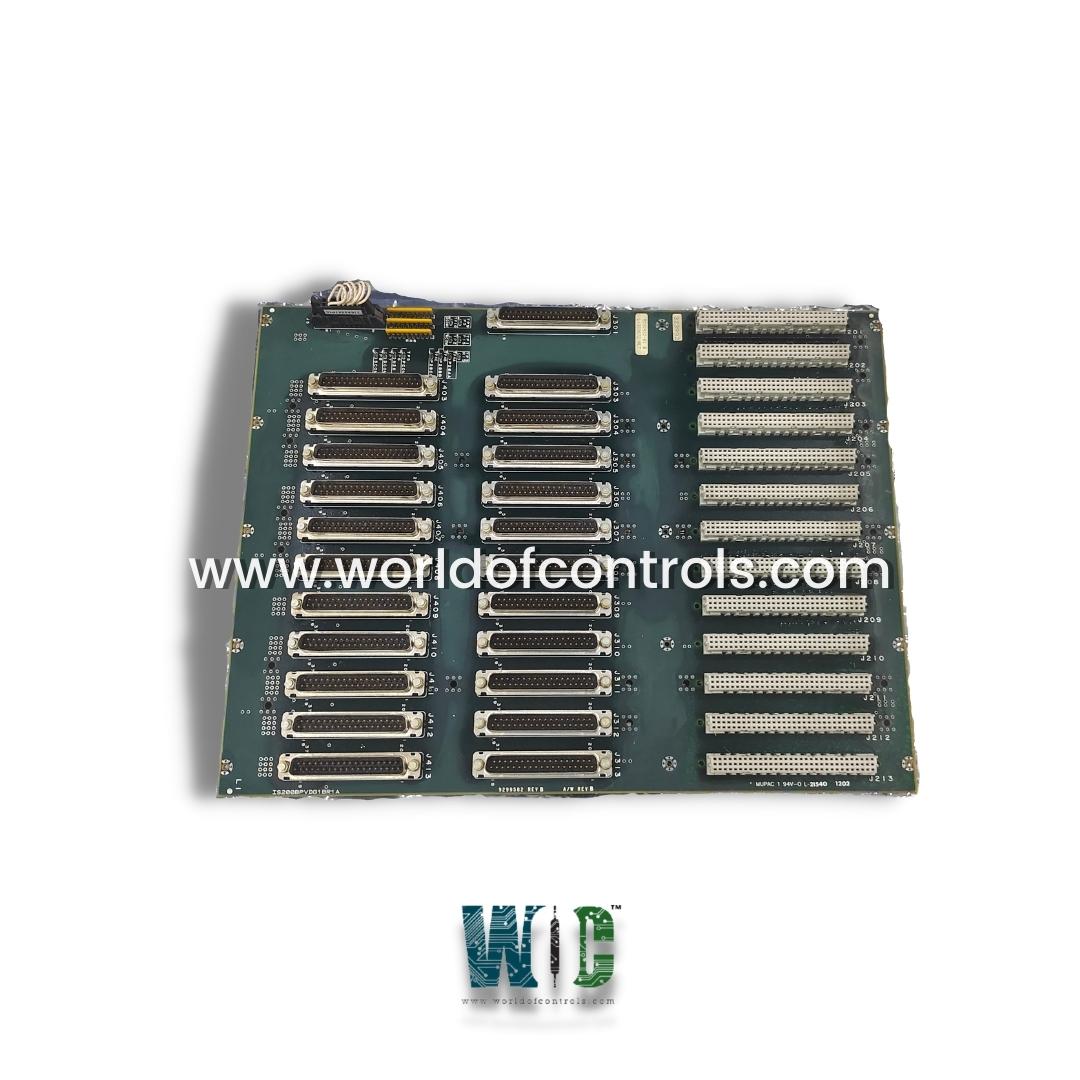
World Of Controls understands the criticality of your requirement and works towards reducing the lead time as much as possible.
IS200BPVBG1BR1 - Backplane Card is available in stock which ships the same day.
IS200BPVBG1BR1 - Backplane Card comes in UNUSED as well as REBUILT condition.
To avail our best deals for IS200BPVBG1BR1 - Backplane Card, contact us and we will get back to you within 24 hours.
SPECIFICATIONS:
Part Number: IS200BPVBG1BR1
Manufacturer: General Electric
Series: Mark VIe
Product Type: Backplane Card
Number of channels: 24
Power supply voltage: 28 V dc
Voltage Range: 14 to 32 V dc
Mounting: DIN-rail mounting
Technology: Surface mount
Operating temperature: -30 to 65°C
Size: 33.02 cm high x 17.8 cm
Repair: 3-7 Day
Availability: In Stock
Country of Origin: United States
FUNCTIONAL DESCRIPTION:
IS200BPVBG1BR1 is a Backplane Card manufactured and designed by General Electric as part of the Mark VIe Series used in GE Distributed Turbine Control Systems. The backplane features P1 and P2 connectors designed for VME boards. P1 connectors facilitate data communication across the backplane, while P2 connectors handle data transfer between the board and DC-37 pin J3 and J4 connectors situated directly beneath each board. Cables extend from these J3 and J4 connectors to the terminal boards. The Mark VI VME rack power supply is a critical component designed to provide stable and reliable power to the VME (Versa Module Europa) control and interface racks. It ensures that all connected devices within the rack receive the necessary voltage levels for optimal performance. The power supply mounts conveniently on the side of the VME control and interface racks, allowing for efficient space utilization and easy access for maintenance.
RACK POWER SUPPLY FEATURES:
The Mark VIe VME rack power supply is a critical component designed to provide stable and reliable power to VME (Versa Module Europa) control and interface racks. It ensures that all connected devices receive the necessary voltage levels for optimal performance. With a space-efficient side-mounting design, it allows for easy access and maintenance within the control cabinet or enclosure. The power supply delivers multiple voltage outputs to support various components within the VME backplane:
SUPPLY INPUT VOLTAGE OPTIONS:
WOC has the largest stock of OEM Replacement Parts for GE Distributed Turbine Control Systems. We can also repair your faulty boards and supply unused and rebuilt boards backed up with a warranty. Our team of experts is available round the clock to support your OEM needs. Our team of experts at WOC is happy to assist you with any of your automation requirements. For pricing and availability on parts and repairs, kindly contact our team by phone or email.
What is the function of a backplane in a VME system?
In a VME system, the backplane card serves as a centralized interconnect that enables communication between different modules, such as CPU boards, input/output (I/O) modules, and communication interfaces. It also distributes power efficiently, ensuring that each component receives the correct voltage levels for optimal operation. The backplane eliminates the need for complex wiring, reducing system complexity and improving reliability.
What voltage levels does the backplane card support?
The backplane card receives power from the Mark VI VME rack power supply and supports multiple voltage levels to accommodate various system components. It typically delivers +5 V DC for powering digital logic circuits, while ±12 V DC and ±15 V DC are provided for analog circuits and operational amplifiers. Additionally, ±28 V DC is available for high-power applications, and an optional 335 V DC output is designed for specialized high-voltage equipment, such as turbine controllers.
How does a backplane card differ from a motherboard?
A backplane card differs from a motherboard in that it is primarily a passive interconnect that facilitates communication and power distribution between modules. Unlike a motherboard, which includes active components such as a CPU and memory slots, a backplane card mainly consists of electrical traces and connectors. Some advanced backplanes may include minimal active components for signal conditioning, but their primary function remains to interconnect various plug-in boards in a modular system.
How are modules connected to the backplane card?
Modules are inserted into the backplane via VMEbus slots, which provide both power and data pathways. These slots ensure a secure and stable connection between modules while allowing for easy removal and replacement when needed. The modular design enables system scalability and flexibility, making it easier to upgrade or expand the system by simply adding new modules.